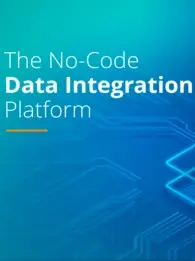
In the constantly evolving landscape of cyber threats, where cyber attacks become more intense, frequent, and advanced, scams targeting businesses remain one of the predominant concerns. Phishing emails, fraudulent transactions, business email compromise (BEC), and ransomware attacks are just the tip of the iceberg. They often lead to one of the most damaging consequences for businesses: data loss.
Consolidated cloud technology and the wide adoption of work-from-everywhere models heavily disperse data, thus becoming a relatively easy target for exogenous and indigenous cybercriminals. Cybersecurity reports forecast that cyber attacks will become even more frequent and intense and will lead - apart from operations disruptions, regulatory fines, and damage in trust - to extreme financial losses that will reach the astronomical number of $10.5 trillion annual costs in 2025.
In the toolkit of a cybersecurity professional, Data Loss Prevention (DLP) strategies emerge as an indispensable shield. Robust and best practices employing DLP solutions can be crucial in safeguarding businesses from scams. Through adequate DLP implementation, companies can protect their sensitive data and keep their cybersecurity posture and hygiene clean.
Why Data Loss Spells Disaster
Data is the lifeblood of contemporary businesses, whether it’s intellectual property, Personally Identifiable Information (PII), financial information and Payment Card Industry (PCI) data, customer databases with records such as Protected Health Information (PHI), or trade secrets.
The loss or unauthorized exposure of such data can be disastrous for the smooth operation of a business and its future wealth and prosperity. Data loss can have a financial impact, directly through fraud, or indirectly through loss of customer trust and regulatory fines. Finally, in the inevitable event of a data breach, the reputation is damaged, and the affected company's image is tarnished, sometimes irreparably.
DLP in a nutshell
DLP refers to a suite of tools and processes that ensure sensitive data is not lost, misused, or accessed by unauthorized users. DLP is a complete strategy for preventing unauthorized access, sharing, disclosure, or loss of sensitive information. DLP solutions are intended to continuously monitor, identify, and prevent data breaches and losses. Since cybercriminals target every business, a robust DLP approach is critical for any size’s and sector’s business.
The primary functions of a DLP solution are to provide data monitoring, visibility, and protection through appropriate policy enforcement and compliance. DLP also offers tools and capabilities, such as machine learning and AI technologies, to assist enterprises in responding to data breaches and policy violations by providing real-time warnings, incident management, and reporting capabilities.
To serve their cybersecurity purposes towards an ideal data loss-free world, DLP solutions share the following common features and characteristics:
- Content Discovery and Classification: Identify where sensitive data resides across the enterprise. Know what to protect.
- Policy-Based Controls: Define and enforce data security policies.
- Data Monitoring and Leakage Prevention: Monitor organizational data flow, block the transmission when suspicious activities are detected, and notify the security teams.
- User and Entity Behavior Analytics (UEBA): Monitor user activities and establish a baseline of normal behavior to detect deviations and unauthorized data access.
- Data Masking and Redaction: Protect sensitive information without impeding legitimate use.
- Endpoint Protection: Include endpoint agents that extend security policies to individual devices.
- Cloud Integration: Offer seamless cloud integration, enabling data protection policies across on-premises and cloud environments.
- Integration with Security Information and Event Management (SIEM) Systems: Correlate DLP alerts with other security events for a more comprehensive view of potential threats.
- Education and Training: Support education and training to raise awareness and reduce the risk of unintentional data breaches.
DLP: Your Business's Shield against Scams
So, how does DLP fit into the puzzle of scam prevention? First of all, DLP solutions can detect insider threats. Not all threats come from the outside. Malicious, negligent, unsuspecting employees, and disgruntled contractors can be responsible for significant data losses. DLP can restrict users from accessing data irrelevant to their job roles and prevent unauthorized data transfers. Additionally, DLP can enhance protection against insider threats by continuously monitoring and detecting unusual user behavior, which might indicate malicious intent.
Secondly, DLP tools can monitor data transmissions and flag suspicious phishing activities, one of the most popular methods cybercriminals use and a standard modus operandi for bad actors to trick employees into divulging sensitive information or credentials. DLP can detect if sensitive information is transmitted outside the organization, even if an employee falls for the scam.
Next, although not a direct solution, DLP can assist in ransomware protection. DLP can identify unusual patterns of data access, which might be indicative of ransomware activity. Combining its capabilities with other security measures, DLP contributes to a comprehensive defense against data breaches and ransomware attacks.
Last, DLP can be effective against advanced persistent threats (APTs), prolonged and targeted cyberattacks where intruders infiltrate a network without detection. DLP tools can recognize unusual data movement or access patterns, raising red flags before significant damage occurs.
Best practices to consider when implementing a DLP strategy shall include a holistic view to span across all enterprise touchpoints, from endpoints to cloud services, a strict and well-documented role-based access control, regular audits and updates to ensure that DLP policies remain effective, and regular training sessions on the importance of data security and ways to identify scams.
Strengthen your defense
With the increasing adoption of cloud services and Internet of Things (IoT) devices, the potential attack surface for businesses has expanded exponentially. The world of cyber threats is continuously evolving, and scams become more sophisticated, frequent, and relentless. Companies cannot afford to be lax about data protection.
DLP strategies, while just one facet of a comprehensive cybersecurity approach, play a pivotal role in shielding businesses from potentially crippling data breaches. By understanding its importance, ensuring its holistic application, and committing to its regular upkeep, businesses can create a robust line of defense against the myriad of scams awaiting a gap in their armour and also fosters trust among stakeholders, partners, and customers.












